Welcome~panamericanelectronics.Com Enterprise website
Writer:Jane Time:2020-07-13 Browse:129
In this article, I will discuss one of the most important criteria to consider when purchasing LED luminescent lamps, namely spectrum. If you don't get the right light color, the plant won't grow well no matter how much money you spend.
If you want to get a new kind of growth lamp, you should really consider LEDs because they are more energy efficient. It's good for your wallet and the environment. The problem is that choosing the right type of light source is not easy. The market is flooded with products in a variety of price ranges, and many manufacturers are claiming claims designed to confuse you.
If you just want a quick answer, please go straight to the last section, which is the optimal spectrum of LED plant lamps. If you want to know what you're doing and make an informed choice, read the whole article.
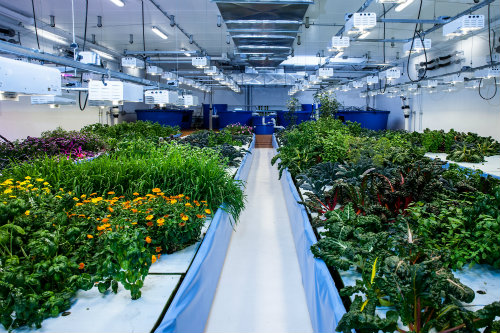
What is a spectrum?
Plants are genetically programmed to grow using sunlight (which we think of as white or yellow-white). The light looks white because it contains all the colors of the rainbow, and when they are all mixed together, they look white.
A spectrum is a graphical representation of each color in light.
Scientists use wavelength numbers instead of color names to refer to colors, which is a more accurate way to measure colors. Thus, red may have a wavelength of 630 or 660. Both of these colors are red to us, but they are actually different colors.
Plant lights that use fluorescent bulbs, and call the color of the bulb cold white (with more blue) or warm white (with more red). This is useful for fluorescent lamps, but this specification does not apply to LEDs. For LEDs, it's more accurate to talk about wavelengths and display the actual spectrum.
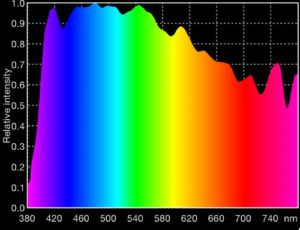
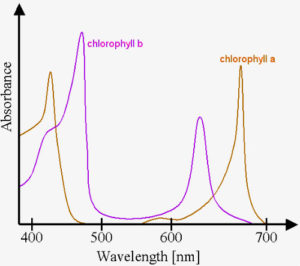
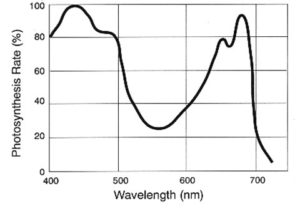
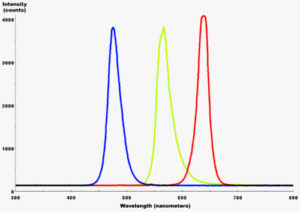
Common spectrum of single LED lamp bead; Blue, yellow and red
It is important to distinguish between LED beads and LED lights. LED Plant Growth Lamp is a complete luminaire that can contain one or more LED beads. Usually more than one. LED beads are small, stand-alone components that glow.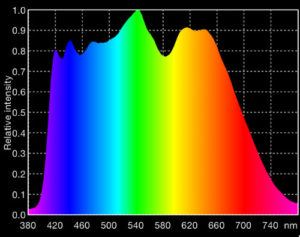
Another way to produce white light is to coat the bulb lens with a phosphorous compound. Such bulbs usually use blue light to illuminate phosphors and produce white light. This is similar to how fluorescent light bulbs work.
White LED bulbs seem to be the best choice, but there's a catch. Every time light is converted to another color, some intensity is lost in the conversion process. This means that a white bulb produces less light than an equivalent LED bulb without a phosphor coating. White bulbs are also more expensive. Even with these limitations, they have become a popular choice for growing lamps.
Is white light the best?
The sun emits white light, and plants perform best when they receive all colors of the visible spectrum, so it can be concluded that it is reasonable to assume that the best LED lights are white light. Many manufacturers try to convince customers, for example:
Either
"Our LEDs offer the best full spectrum and can provide plants, vegetables and flowers with everything they need for natural light at all stages of growth."
"Our LED lights replicate the spectrum of the sun."
The problem with this logic is that plants don't need light that looks white to us, nor do they need light that mimics the sun. Plants are better off with more red and blue and less green and yellow light.
White light is not important to plants - the correct amount of each wavelength is crucial.
Light intensity is also important
So far, we've focused on spectra that are very important, but light intensity is also important. For many years, greenhouse lamp has been high intensity sodium lamp. I have been using it for many years and it is suitable for both seedlings that require low light levels and flowering orchids that require high light levels. It's a very yellow light with only a small amount of blue, but at 400 watts, it has a very high intensity. The high intensity means that even if blue is only a minor component of light, it is still enough to grow plants.
The white LEDs mentioned above seem to be a perfect solution, but they are less strong than uncoated bulbs. Therefore, uncoated bulbs are still a good choice.
Never mind the lumen value
Strength is important, but how do you measure it?
A common way of doing this is to measure lumens, which are a measure of the brightness of light. The problem with lumens is that they measure the brightness of light that the human eye sees, and our eyes see green and yellow light much better than blue and red.
Most of the light that produces blue and red doesn't look very bright to us, so the lumen count is low. Yellow-green light emits the same number of photons, looks bright to us and therefore has a high lumen value. But this high-lumen light does not have the optimal spectrum for plant growth. Lumens are great for choosing light sources for your home, but they're almost useless for choosing LED plant growth lights.
You may be wondering how lumens relate to Lux and foot candles. Lux is lumens per square meter, and foot candles are lumens per square foot.
PAR and PPDF
Scientists have come up with a better way to measure the light from plant growth, called PAR(photosynthetically active radiation). PAR defines the relative amount of plant light used for photosynthesis and ranges from 400 nm to 700 nm.
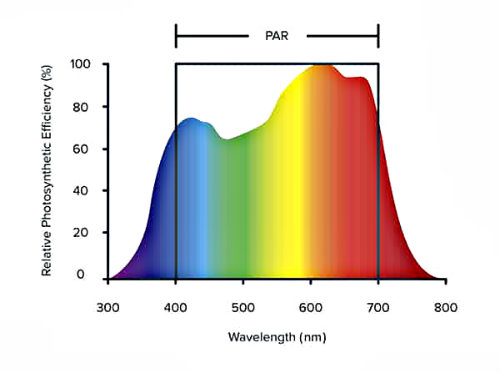
Tel: +86 0769 38930008
Phone:+86 13267401690
Mail:Vipmanager@panamericanelectronics.com
Add: Building 6, Zhongtang Tian'an Digital City, No. 88, Jinyuan Road, Zhongtang Town, Dongguan City, Guangdong Province,China